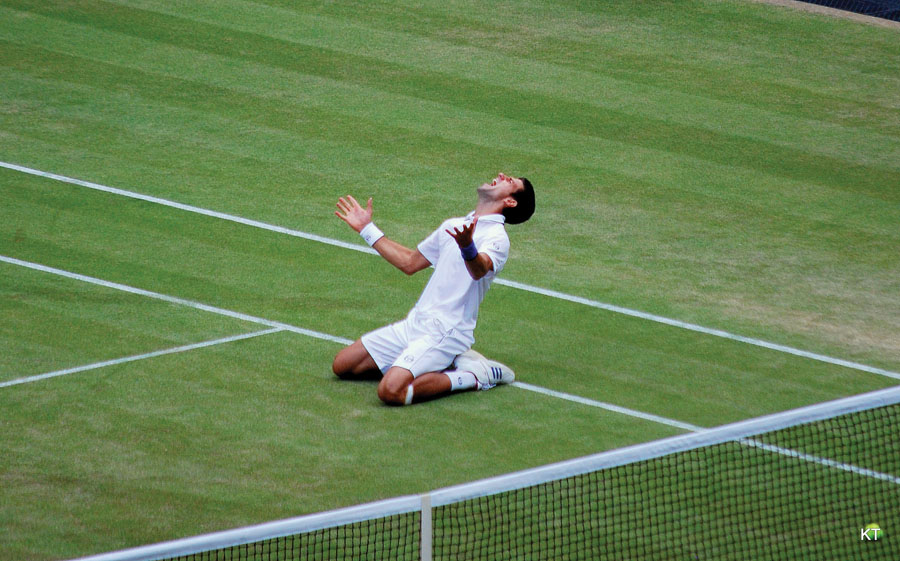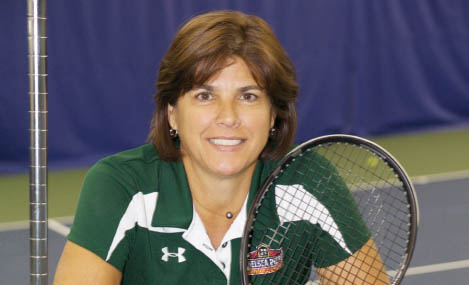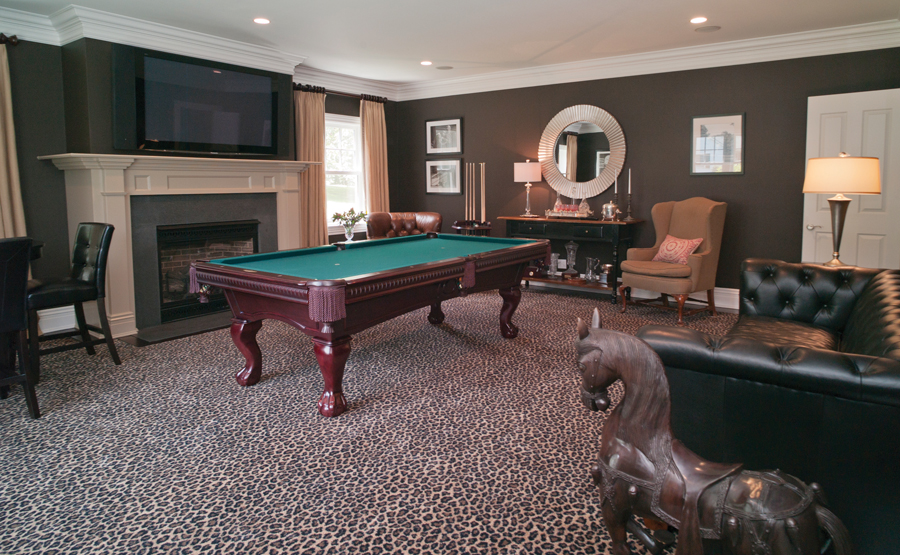In a sport that has been marked by the individuality and independent-mindedness of its players – Ilie Nastase, anyone? – few are more idiosyncratic than Novak Djokovic.
Think not? Well, then, consider:
Would Roger Federer wing-walk – yes, that would be on a moving airplane – for a commercial as Djokovic has done to represent Head, the racket company?
Would Rod Laver have donned a wig to impersonate Billie Jean King the way Djokovic has Maria Sharapova?
And would that Renaissance Man John McEnroe – art aficionado and sometime rocker – have celebrated winning the China Open last year by dancing Gangnam Style?
Such hijinks have endeared Nole to many (and infuriated a few others). But none can deny that underpinning the born performer is a serious Pilgrim’s Progress along the road to wellness that embraces mind, body and spirit.
“I have a personal philosophy, which I call ‘Be Unique’ and that is based on my strong passion, drive and eagerness to keep improving myself,” says the world No. 1, who is slated to play in the US Open at the end of this month.
He goes on to tell Uniqlo – the fun, affordable day- and active-wear company for which he serves as a global brand ambassador: “I am passionate about being the best possible tennis player, as well as the best possible person and I have a continual desire to help people, especially children who have been less fortunate than I.”
Advantage: fitness
The most apparent aspect of that well-being has been the physical transformation that helped propel him to the No. 1 ranking in 2011. (He is the first man since Federer to hold it two years consecutively.) Much has already been made of how Djokovic – who is allergic to gluten and grew up eating at the family pizzeria – changed his diet with the help of Dr. Igor Cetojevic, who encouraged him to forgo bread, sugary snacks and big, meat-centric meals in favor of gluten-free cereal, berries, nuts, fruit bars, vegetables, rice and drinks containing vitamins and minerals – although Djokovic does allow himself a single beer and even an occasional bagel after winning a tournament.
Always sinewy, Djokovic developed a leaner physique that nonetheless had more stamina to withstand punishing rallies with friendly rivals like Rafael Nadal. (Their six-hour, gladiators-in-heat final at the 2012 Australian Open, in which Djokovic finally prevailed in the wee hours of the morning, blood seeping through his socks, is the longest grand slam final ever and considered one of the greatest matches of all time.)
But diet is only one part of the physical game. In its Body issue last year, ESPN magazine described Djokovic’s “day off” workout, which includes hitting the courts, stretching, drinking recovery fluids, visiting the trainer, going for a massage, talking strategy, doing yoga, jogging and then holding another 90-minute practice session, in which serving at 125 miles an hour, he must hit a water bottle placed in the corner of the server’s box on the opposite side of the net – five times.
This goes on for 11 months of the year.
Exhausted much?
Serbia in his soul
Djokovic’s fitness preparations even extend to his on-court attire. Last year, he signed with Uniqlo – a Japanese-based retailer that is making inroads into WAG country and specializes in the kind of sleek designs, intense colors (navy, seafoam, royal blue) and breathable fabrics that complement Djokovic’s fascinating athletic blend of tautness and elasticity.
The relationship goes beyond apparel, however. Tadashi Yanai – the founding chairman, president and CEO of the Fast Retailing Co. Ltd., Uniqlo’s parent company – selected Djokovic, a fellow member of Time’s Most Influential club, because he sensed in him an athlete who wanted to be a champion in every sense of the word. And indeed, Djokovic and Uniqlo are partners in a $10 million Clothes for Smiles campaign to improve the education and lives of children around the world. After the US Open last year and Wimbledon this year, Djokovic – with girlfriend Jelena Ristic at his side – raised a combined $3.2 million for the foundation that bears his name to aid disadvantaged children in his native Serbia.
Serbia: No discussion of Djokovic can proceed without an understanding of the complex ties that bind him to his homeland. He was born there in Belgrade in 1987 on a day that is perhaps fitting for someone who plays doubles as well – May 22, at the beginning of the sign of Gemini, the Twins. Djokovic’s parents, Srdjan and Dijana, were skiers, and his father would bundle the baby, the first of three boys, strap him to his back and take him whooshing down the slopes of Kaoponik, a mountain
town where the family ran the Red Bull restaurant. But at 5, Djokovic saw Pete Sampras playing tennis on TV, and when coach Jelena Gencic opened a summer camp across the street, little Nole packed his bag himself and set off.
If you’ve seen Bob Simon’s funny, poignant profile of Djokovic on “60 Minutes,” then you know that Gencic, who died on June 1, had to be one of the greatest teachers this side of Aristotle and Annie Sullivan. The onetime coach of Goran Ivanesevic and Monica Seles, the gentle Gencic recognized in young Nole a “golden child” who would one day be the No. 1 tennis player in the world. She, his “second mother,” taught him not only how to play tennis but how to appreciate nature, poetry, classical music and languages. (Besides Serbian, he speaks English, French, German and Italian.) Gencic provided the entrée to Nikola Pilic’s tennis academy in Germany, where Djokovic spent his early teen years, beginning his international career at age 14.
That should have been all she wrote, so to speak, but life isn’t a Lifetime movie. As the former Yugoslavia splintered, Serbian atrocities against Bosnian Muslims and rebel Albanians in Kosovo led to NATO raids on Djokovic’s country in 1999. At first, young Nole and his extended family hid in the basement of the apartment building where his adored grandfather lived. But soon the family returned to their Belgrade apartment and their lives. In interviews, Djokovic has recalled celebrating his 12th birthday with the falling bombs providing competition or waking up in the middle of the night to find his mother watching over him. And always there was tennis, even if it meant playing on the makeshift court of an empty swimming pool.
As a result, Sports Illustrated’s Jon Wertheim has written, Djokovic carries a burden that no other No. 1 has ever had. Early in his career, he didn’t always shoulder it well. He was a gorgeous punk kid with a reputation for quitting and playing “the Djoker,” sometimes at others’ expense. But he has blossomed into the kind of young man who can balance intense nationalism – committing himself to Serbia’s Davis Cup team and earning the Serbian Orthodox Church’s Order of St. Sava for helping restore Kosovo’s monasteries – with his responsibilities to the world. A resident of Monte Carlo – where he lives with Ristic and his beloved Poodle, Pierre – Djokovic is a member of the Monaco-based Champions for Peace and has said he would like to represent all the countries that made up the former Yugoslav Republic.
An Open book
In a sense, Djokovic’s progress toward what Jung called “the integrated self” has been encapsulated by his US Open experience. After making a good first impression in 2007, he got off on the wrong foot with Andy Roddick and the New York crowd the following year, objecting to the American calling him out for his multiple medical excuses. Slowly, he began winning fans in Flushing Meadows, with the turning point perhaps coming with a spectacular comeback against Federer, down two match points, in the semifinals of the 2010 tournament.
Though he would lose to Nadal in the final, the tournament foreshadowed what was to come – a Davis Cup for Serbia at the end of 2010 and an unbeaten 41-match streak that would fall one short of John McEnroe’s record and catapult Djokovic to the top ranking in 2011.
That year, he would win the US Open, defeating Federer in the same manner he beat him in the previous year, then vanquishing Nadal, whom some experts still see as his greatest rival despite Andy Murray’s ascendance. When Djokovic donned a New York firefighters’ cap for the trophy ceremony and spoke movingly of 9/11, wearing red, white and blue – the colors of the United States, the colors of Serbia – the symbolism and the irony weren’t lost on anyone. He had come full circle.
Still, his greatest US Open moment to date may have come last year though he lost to Murray in the final. As he practiced one day, a little boy yelled out, asking Djokovic to marry him. Though Djokovic said he could not, he invited the boy down to the court, let him hit and then gave him a hug. The gesture won more than a few hearts.
One blog poster summed it up precisely: “It’s been fun watching Nole grow up.”




